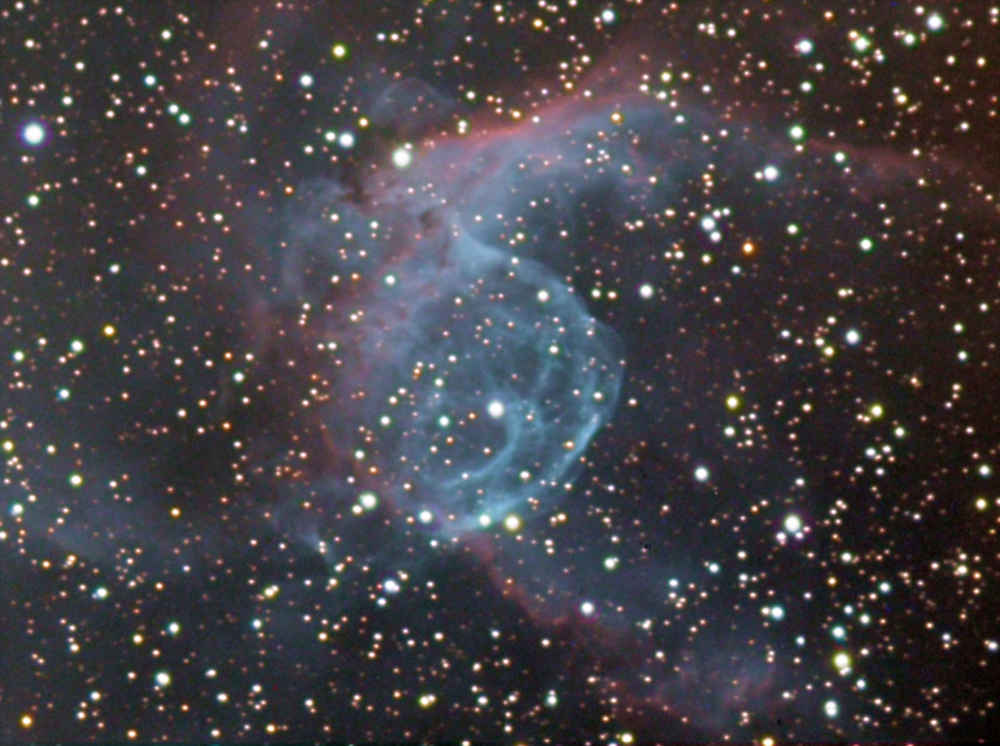 Here is the transcript for my podcast about how to see open cluster M41, the Tau Canis Majoris Cluster, and Thor’s Helmet this week.
Here is the transcript for my podcast about how to see open cluster M41, the Tau Canis Majoris Cluster, and Thor’s Helmet this week.
Check out the Astronomy.com's interactive star chart to see an accurate map of your sky. It'll help you locate some of this week's key targets. Astronomy magazine subscribers have access to a slew of cool functions with StarDome PLUS.
Each week, I highlight three different night-sky targets for you to see:
- One object you can find with your naked eyes or through binoculars
- One object to find with a small telescope
- One deep-sky object to find with an 8-inch or larger telescope for you avid astronomers
--Start transcript--
Follow the brilliant guide
This week’s naked-eye object is open cluster M41, which lies in Canis Major the Great Dog. It’s easy to find M41 on any clear winter night. First, find Sirius (Alpha [α] Canis Majoris), the night sky’s brightest star. Then look 4° due south.
Because it glows at magnitude 4.5, most observers should be able to pick out M41 easily with their naked eyes under a dark sky. This cluster lies 2,000 light-years away and measures about 20 light-years across.
Now just because you can see M41 without optical aid doesn’t mean you shouldn’t point your binoculars or telescope at it. Even a low-power view reveals dozens of stars with a 7th-magnitude orange gem at the cluster’s center.
Train your telescope on Tau
This week’s small telescope target is the Tau (τ) Canis Majoris Cluster, also known as NGC 2362. From M41, move 8.6° east-southeast. With unaided eyes, you’ll notice a glow around the 4th-magnitude star Tau CMa. When you point your telescope at this object, however, you’ll have a whole new perspective.
Tau CMa forms the centerpiece of this terrific star cluster. A 4-inch scope will show stars in three tiers of brightness. First, there’s brilliant Tau. Then, 3 magnitudes fainter, a half-dozen other stars catch your gaze. Finally, you’ll spot the faintest stars, which glow at 10th magnitude. Look closely for the tight group of these stars spanning 6' that surrounds Tau. Don’t let the brilliance of the principal luminary deter you.
 For Asgard!
For Asgard!
This week’s deep-sky object is my choice for “best-named” celestial target — Thor’s Helmet. Some historical illustrations (and the entire 600-issue run of the Marvel Comics’ superhero epic) picture the Norse thunder god Thor wearing a winged helmet. Well, through a large scope, this nebula, also known as NGC 2359, looks like a helmet with wings.
Thor’s Helmet completes this week’s trio of objects that lie in Canis Major. It sits 8.8° east-northeast of Sirius. This celestial treat is a cosmic bubble sculpted by radiation from a type of luminous, massive star called a Wolf-Rayet star.
Editor's note: Al Kelly submitted the image of Thor's Helmet above to Astronomy.com's Online Reader Gallery.
French astronomers Charles Joseph Étienne Wolf and Georges Antoine Pons Rayet discovered this stellar type spectroscopically in 1867. These short-lived supergiant stars are rare; astronomers have discovered fewer than 250 of them within the Milky Way.
To enhance NGC 2359’s visual appearance, use a nebula filter such as an OIII. Through a 12-inch telescope, you’ll see the circular central area and the helmet’s two “wings.” The brightest part measures 1' wide and extends to the south approximately 4'.
Recently, I observed Thor’s Helmet through a 30-inch telescope. The intricate details I thought visible only in photographs amazed me. If you have the opportunity to observe NGC 2359 through a large scope, take it. You won’t be disappointed.
--End transcript--
Previous episode: Canis Minor, M78, and the Witch Head Nebula
Previous transcript